Cities on the Edge: Jakarta Part 2
Engineering the Impossible: How Jakarta Fights Back Against Rising Seas and Sinking Land
This is part of 'Cities on the Edge,' a series examining nine cities at the frontlines of the climate crisis. From Tokyo to Lagos, from Miami to Delhi, each city tells a unique story of challenges and adaptation. Through these urban narratives, I explore how different societies, economies, and cultures are responding to our changing climate.
In Part 1 of this series, I explored Jakarta's existential crisis: a megacity of 10 million plus people racing against time as land sinks faster than seas rise. Children wade to school through permanently flooded streets. Families abandon ground floors in daily rituals of adaptation. The question that haunts every flood is simple yet profound: How long can millions of people continue to live in a city that's disappearing beneath their feet?
Now I turn to Jakarta's response—a story of remarkable ingenuity and sobering limitations. Unlike Tokyo's approach, which relies on massive engineering projects funded by substantial financial resources, or Delhi's focus on community-based adaptation with limited budgets, Jakarta must chart a different path entirely. As the world's fastest-sinking megacity facing an existential threat, Jakarta's solutions are necessarily bold, experimental, and often desperate.
From engineering the weather itself to relocating the nation's capital, from constructing a giant bird-shaped seawall to pioneering Islamic green finance, Jakarta's climate response represents one of the most ambitious urban adaptation efforts ever attempted. However, even the most sophisticated interventions struggle against the relentless physics of subsidence and the complex politics of inequality.
Engineering Ambition: The Garuda Sea Wall
Jakarta's most audacious response to its existential threat is the National Capital Integrated Coastal Development (NCICD) project, anchored by the $40 billion Giant Sea Wall. Designed in the shape of Indonesia's national symbol, the Garuda bird, this 32-kilometre structure aims to shield the city from rising seas while creating 17 artificial islands for urban development.
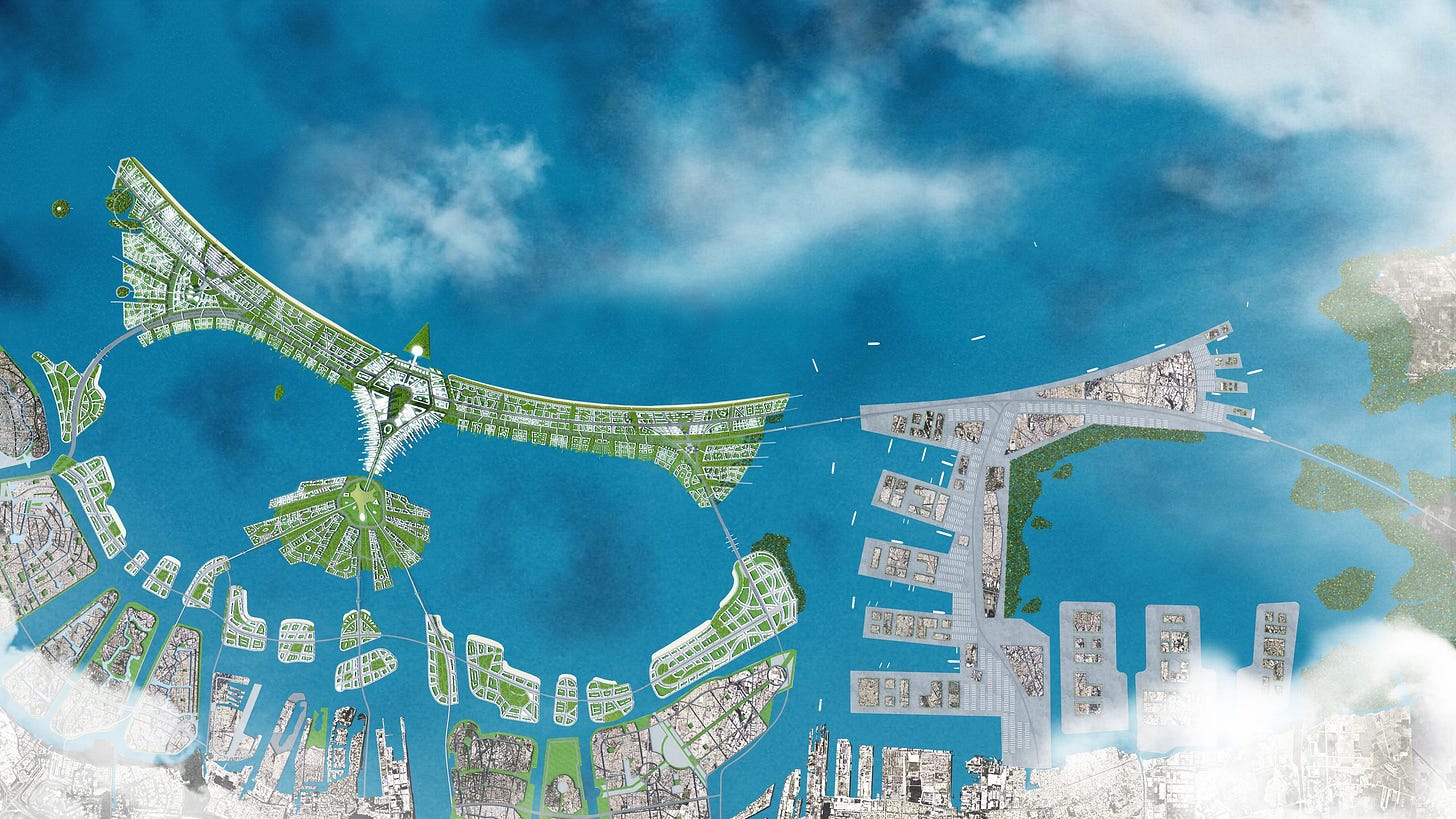
The project represents engineering optimism at its most extreme—a belief that human ingenuity can outpace the relentless forces of climate change and geological subsidence. When completed, the Garuda Wall will stretch across Jakarta Bay like a protective embrace, with automated floodgates designed to regulate water flow while massive pumping stations manage drainage from the sinking city behind it.
The Engineering Challenge
Phase 1 of the project, running from 2014 to 2024, focused on strengthening existing sea dikes and constructing artificial islands like Pluit City, which will host toll roads, a seaport, and housing for 2 million residents. The scale is breathtaking: engineers are literally creating new land from the sea while the existing city sinks beneath their feet.
Phase 2, scheduled for 2025 to 2045, envisions the construction of the massive seawall itself, complete with automated floodgates, rainwater storage systems, and a freshwater reservoir designed to reduce Jakarta's catastrophic reliance on groundwater extraction. Dutch engineering firm Witteveen+Bos, drawing on centuries of experience with water management, leads the technical design. Project engineers describe the challenge as building a new coastline for Jakarta, even as the old one continues to disappear due to subsidence.
Yet critics argue the wall faces insurmountable challenges. Land subsidence rates of up to 25cm annually in North Jakarta may outpace the wall's capacity to protect the city, potentially rendering this massive investment obsolete within decades. The project's own environmental impact assessment warns that the wall could disrupt marine ecosystems and trap pollution in Jakarta Bay, creating new environmental hazards while attempting to solve existing ones.
Perhaps most concerning, only 40% of the required funding has been secured, despite relying heavily on international partnerships with the Netherlands and private investors. The project's completion depends on sustained political will and economic stability over two decades—a challenging proposition for any mega-project, let alone one racing against geological time.
Weather Modification: Engineering the Skies
When Jakarta's March 2025 floods threatened to overwhelm the capital, Indonesia turned to one of its most controversial climate tools: cloud seeding. As floodwaters rose and evacuation orders went out, aircraft took to the skies above Bogor and surrounding areas, attempting to reduce rainfall intensity before storms could reach the metropolitan area.
The operation, coordinated between the Meteorology, Climatology, and Geophysical Agency (BMKG) and the National Disaster Management Agency (BNPB), represents Indonesia's growing reliance on weather modification technology. During the March crisis, aircraft released salt particles into clouds over upstream areas, aiming to "break up" storm systems and redistribute precipitation across wider areas.
“We can’t prevent the rain, that’s impossible, but we can reduce the intensity,” Dwikorita Karnawati, head of Indonesia’s weather agency, told reporters on Tuesday. “We can’t let the clouds get too big, so we will make it come down little by little,” as the floods displaced over 120,000 people across the Jakarta metropolitan area.
The technology had been activated when rainfall exceeded critical thresholds at monitoring stations in Bogor, where 230mm of rain fell in a single day—triggering the devastating floods.
The Science of Desperation
Cloud seeding works by introducing particles (typically salt or silver iodide) into clouds to encourage precipitation in targeted areas or reduce rainfall intensity. In Jakarta's case, the goal is to weaken storm systems before they reach the densely populated capital.
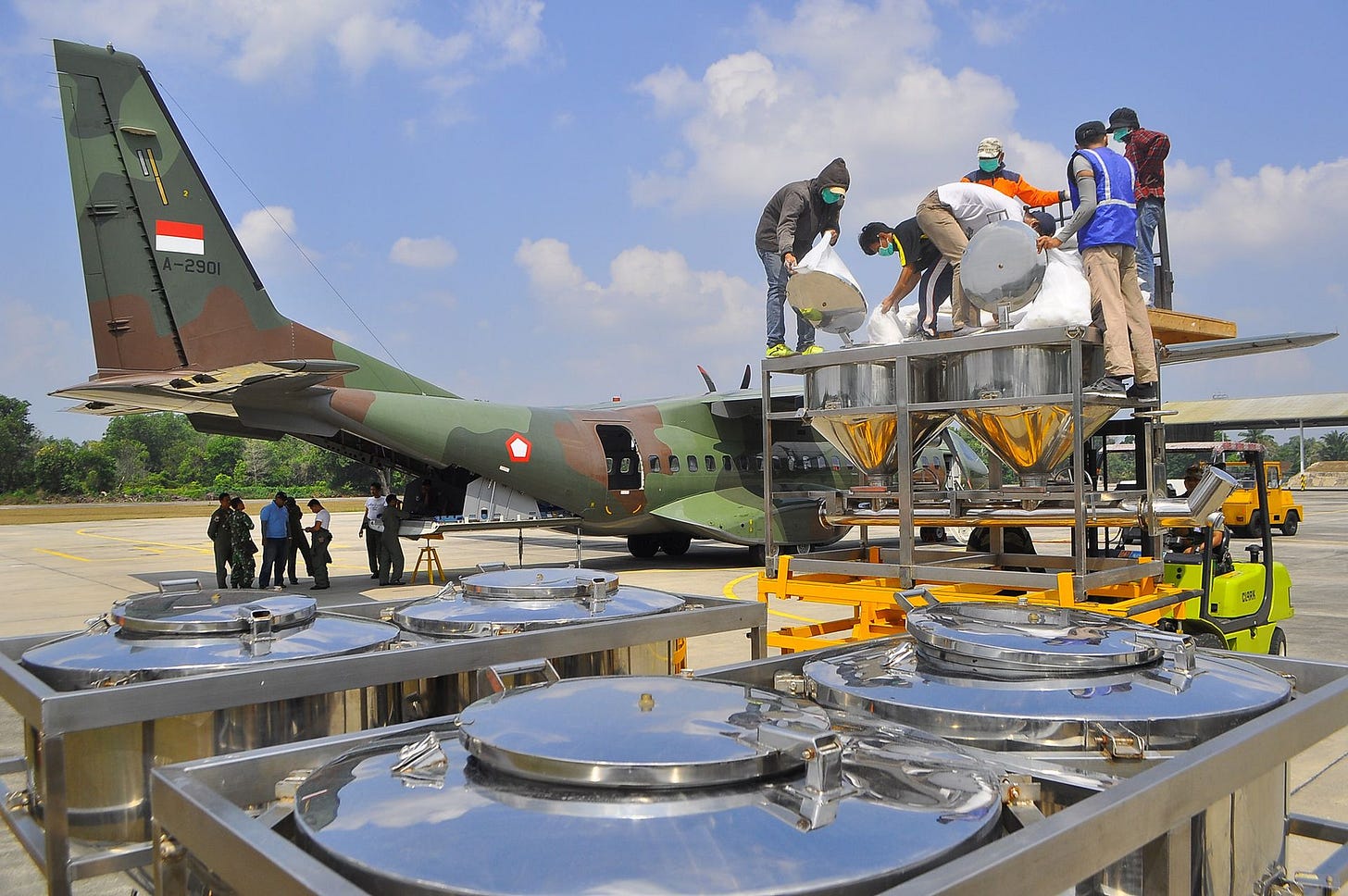
However, the technology has significant limitations. Weather modification effectiveness is variable at best, and many times can be insufficient for extreme events like the March 2025 floods. Operations must begin hours before storms reach Jakarta, requiring accurate forecasting and rapid deployment. The technology only works under specific atmospheric conditions, making it unreliable as a standalone solution.
Indonesia's embrace of cloud seeding reflects the country's growing desperation as conventional flood management proves inadequate. The March 2025 floods occurred despite lower rainfall intensity than previous major events, suggesting that land subsidence and urban development have made the city more vulnerable to smaller storms.
BMKG claimed the weather modification operations helped reduce downstream impacts, though independent verification remains limited. Critics argue cloud seeding may simply shift flooding to other areas rather than eliminating the problem, raising complex questions about weather sovereignty and environmental justice.
Indonesia’s weather modification operations over upstream areas like Bogor and Puncak Cisarua are designed to reduce rainfall and mitigate flooding in Jakarta. These interventions can alter rainfall distribution in rural upstream communities, which may impact local agriculture and flood risks, depending on the extent and location of induced or suppressed rainfall. Disaster management officials caution that cloud seeding is only one tool among many, and that addressing the root causes of flooding is essential.
The Great Relocation: Nusantara and the Capital Exodus
In 2022, Indonesia made an unprecedented decision: relocating its capital from Jakarta to Nusantara in Borneo—a $32 billion project designed to decongest Java and address Jakarta's existential risks.
The relocation represents the ultimate admission that Jakarta's challenges may be insurmountable. When a government decides to abandon its capital city, it signals both the severity of the crisis and the limits of adaptation. Yet it also raises profound questions about who gets left behind.
The Vision of Nusantara
The new capital is envisioned as a "smart green city" with 80% autonomous public transport and 70% green space. Phase 1, running from 2022 to 2024, focuses on relocating key government institutions and developing basic infrastructure. By Phase 5, scheduled for 2040 to 2045, Nusantara aims to be a fully functioning capital that showcases Indonesia's commitment to sustainable development.
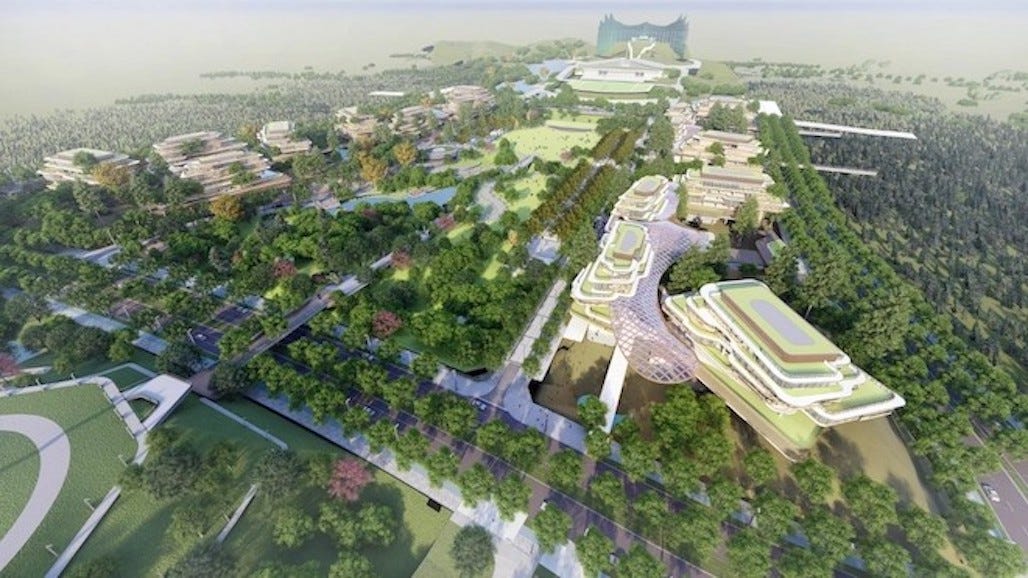
President Joko Widodo has described Nusantara as a symbol of Indonesia's future—a modern, environmentally sustainable city that contrasts sharply with Jakarta's environmental degradation and infrastructure failures.
“We couldn’t continue to allow the burden on Jakarta and Java island to increase in terms of population density,” Widodo said. “Economic disparities between Java and elsewhere would also increase.”
The Jakarta Question
Yet the relocation raises uncomfortable questions about Jakarta's future. While the city retains its economic role, the capital exodus risks diverting resources from adaptation projects like the Garuda Wall precisely when they're most needed.
Over 10 million residents will remain in the sinking city, and the relocation threatens to exacerbate inequality as wealthier populations and businesses migrate to the new capital. Government officials, civil servants, and international organisations may have the option to relocate, but street vendors, factory workers, and informal settlement residents have no such choice.
Several experts, such as Chin or Siwage Dharma Negara, co-coordinator of the Indonesian Studies Programme at the ISEAS-Yusof Ishak Institute in Singapore, are concerned. They argue that moving the capital will not help matters in Jakarta either if no other concrete measures are taken (in relation to traffic management, pollution or water consumption, for example). The people who stay in Jakarta will continue to live as they do now.
The risk is that Jakarta becomes a "left-behind city"—economically important enough to maintain but politically marginal enough to receive reduced investment in climate adaptation. This could create a two-tier system where the new capital represents Indonesia's sustainable future while the old capital embodies its climate vulnerabilities.
Community Adaptation: Grassroots Resilience in the Kampungs
While government and engineers focus on mega-projects, Jakarta's most immediate climate responses are emerging from its informal settlements, or kampungs, where residents employ innovative, low-cost strategies to survive annual floods.
In North Jakarta's coastal kampungs, families have developed a sophisticated repertoire of flood adaptations. Physical modifications include raising homes by 1-2 metres, building terraced housing that can accommodate different flood levels, and constructing makeshift dikes from sandbags and concrete blocks.
The Power of Gotong Royong
These individual adaptations are supported by gotong royong—traditional Indonesian concepts of mutual aid that have taken on new urgency in the climate era. Community networks clear drains before flood seasons, share resources during emergencies, and coordinate evacuations when waters rise too high. Community leaders tend to know their neighbourhoods better than government officials and rely on each other during floods.
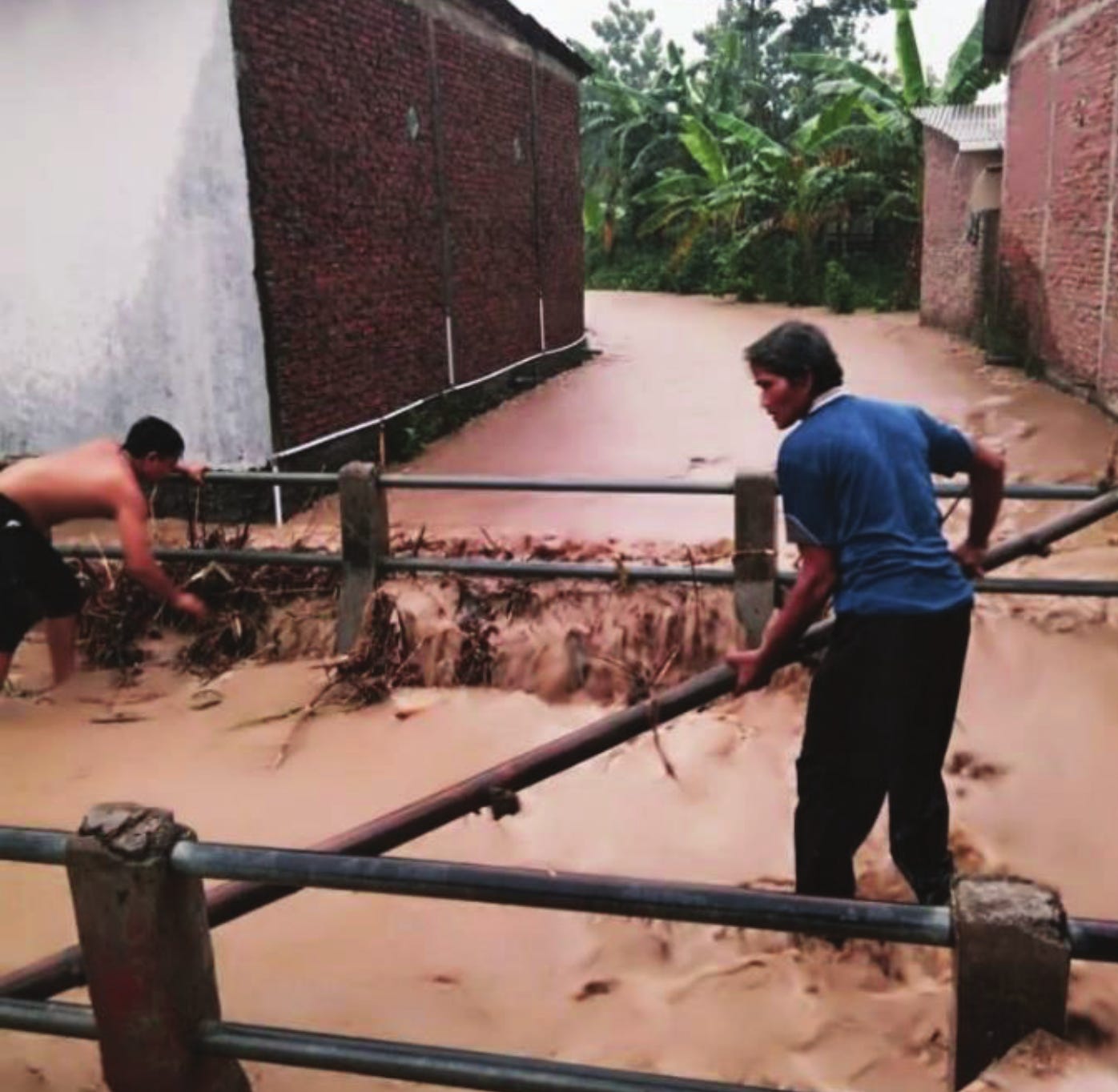
These community-led early warning systems proved more reliable than official channels during the March 2025 floods. WhatsApp groups managed by local preparedness communities provided updates every 30 minutes about rising water levels, often reaching residents faster than government alerts.
“Back then [2013] we didn’t have the communication system. Now we mainly use WhatsApp and Facebook groups to communicate with each other,” Dedi Setiawan, one of the millions of Jakartans who is relying on WhatsApp groups to provide him information on floods faster than government officials.
The Limits of Individual Adaptation
Yet community resilience has clear limitations. In Muara Angke, residents report rebuilding homes 3-4 times yearly as flooding becomes more frequent and severe. Uncoordinated efforts often lead to fragmented solutions—one family's flood barrier may simply redirect water to their neighbour's home. Additionally, house elevation that once provided protection for a decade now requires updates every few years as subsidence accelerates. Adapting to adapt to their adaptations is a reality millions of Jakartans are facing.
These limitations highlight a cruel irony: the communities most vulnerable to climate change are also those with the greatest adaptive capacity, yet their innovations remain isolated and under-resourced. Without systematic support, even the most ingenious grassroots solutions cannot match the scale of Jakarta's environmental challenges.
Financing the Transformation: Indonesia's Green Finance Revolution
Jakarta's climate adaptation efforts are being fueled by one of Asia's most sophisticated green finance ecosystems. While the city's $40 billion infrastructure needs far exceed municipal budgets, Indonesia has pioneered innovative financial instruments that are reshaping how climate adaptation gets funded.
A Regional Leader in Green Capital
Indonesia leads Southeast Asia in sustainable finance, pioneering green bonds and sovereign green sukuk that align with the country’s religious values while funding climate projects. These instruments have mobilised billions for Jakarta’s flood management, sustainable transport, and coastal protection infrastructure. The 2021 sovereign green sukuk raised $1.25 billion specifically for these purposes.
“The Green Sukuk initiative has paved the way for capital flow for our sustainable future.” Sri Mulyani Indrawati, Minister of Finance
Systematic Financial Reform
The government’s approach extends beyond bond issuances, creating a robust ecosystem for sustainable investment. The Financial Services Authority (OJK) has implemented the Sustainable Finance Roadmap Phase II (2021-2025), accelerating ESG integration and developing a national green taxonomy to clarify sustainable investment standards. In 2025, the Sustainable Finance Committee (SFC) was established to coordinate green investment, align regulatory frameworks, and work with international partners, improving coordination among agencies managing Jakarta’s flood defences, transport, and coastal protection.
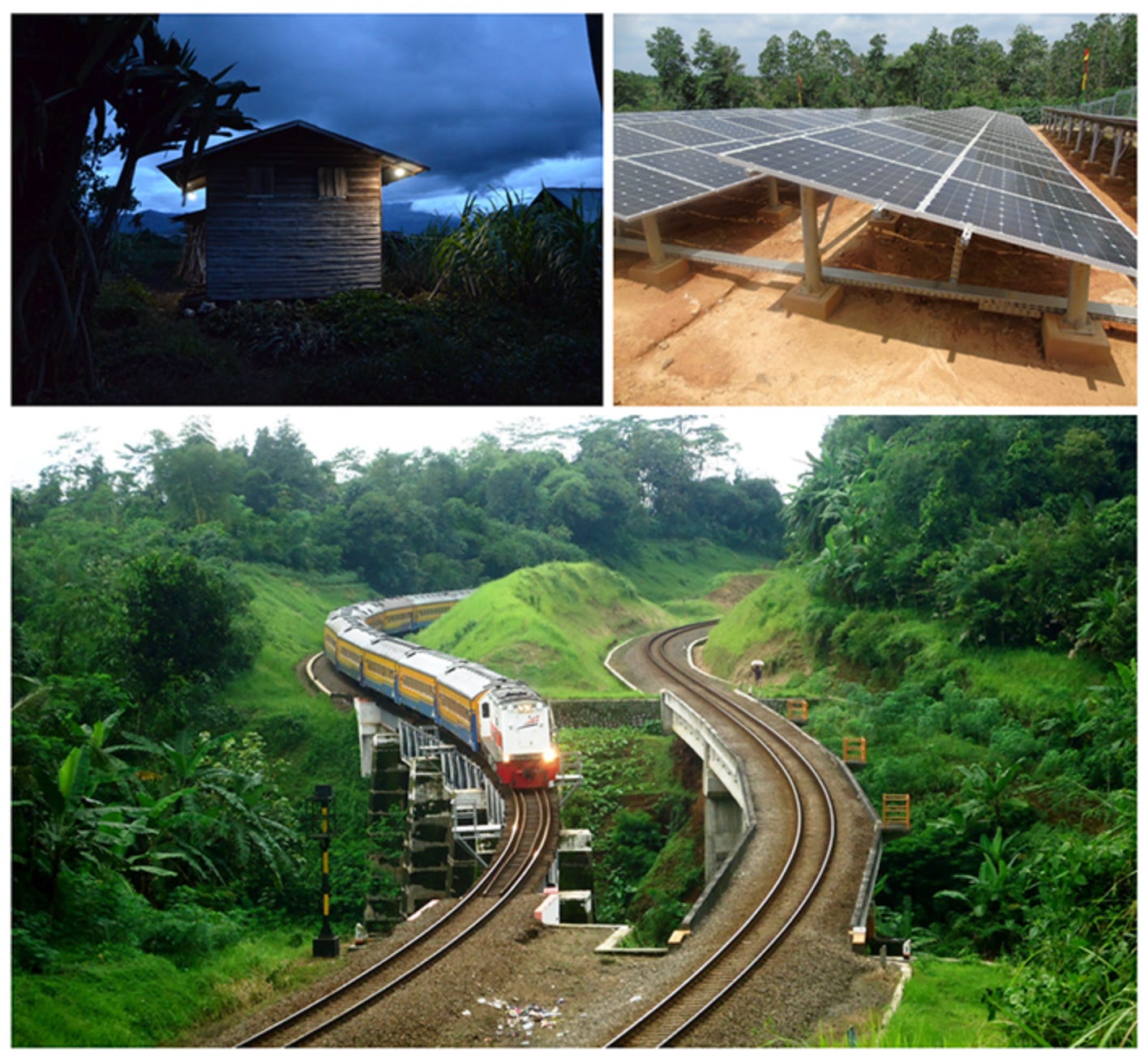
Blended Finance: De-risking Climate Investment
Indonesia has embraced blended finance models, combining public, private, and philanthropic capital for infrastructure projects. PT Sarana Multi Infrastruktur (PT SMI) facilitates these arrangements. The Garuda Sea Wall project exemplifies this approach, using public funds to absorb initial risks and attract private investors. PT SMI officials emphasise that blended finance structures are designed to de-risk projects for private investors, leveraging public resources to attract private capital for public benefit
Innovation Meets Reality
Despite innovations, Indonesia’s green finance framework faces implementation challenges, including fragmented governance, inefficiencies, and limited climate finance reaching vulnerable communities. The Climate Policy Initiative found that less than 30% of climate finance reaches those most at risk, and green bonds often do not benefit the poorest neighbourhoods. Over 90% of climate finance currently comes from international sources, creating dependence on external conditions, though the government is working to mobilise more domestic capital.
Nature-Based Solutions: Working with Water
Alongside massive engineering projects, Jakarta is experimenting with nature-based solutions (NbS) that work with rather than against natural water systems. While the city has long relied on large-scale engineering projects such as seawalls and pumps, there is a growing emphasis on adaptive strategies that work with natural water systems. This shift is reflected in Jakarta’s integration of green and blue infrastructure—such as retention ponds, green spaces, and bioswales—into its urban planning, offering benefits beyond flood control, including improved air quality and urban cooling.
The East Sunter Success Story
The East Sunter Polder System demonstrates how green infrastructure can provide flood protection while delivering multiple benefits. This integrated system combines retention ponds, green spaces, and natural drainage to manage stormwater runoff. Studies show that the polder system has significantly reduced flood risk in pilot areas, although it has not eliminated flooding entirely due to ongoing land-use changes and drainage challenges. Additional benefits include recreational spaces and support for urban biodiversity. Experts note that Jakarta is moving from a mindset of “fighting the water” to “learning to live with it,” reflecting a broader shift in urban water management philosophy.
Despite these successes, expansion of such systems remains limited. Land-use policies that favour development over green space continue to constrain implementation. Recent estimates indicate that only about 10% of Jakarta is classified as “green space”, well below the city’s 30% target for meaningful climate adaptation.
Mangrove Restoration: Jakarta's Green Belt
Jakarta Bay's mangrove restoration projects aim to create a natural buffer against storm surges while providing ecosystem services like water filtration and carbon sequestration. Community-based restoration efforts have replanted several hundred hectares of mangrove forests, though coverage remains limited to 5% of the coastline.
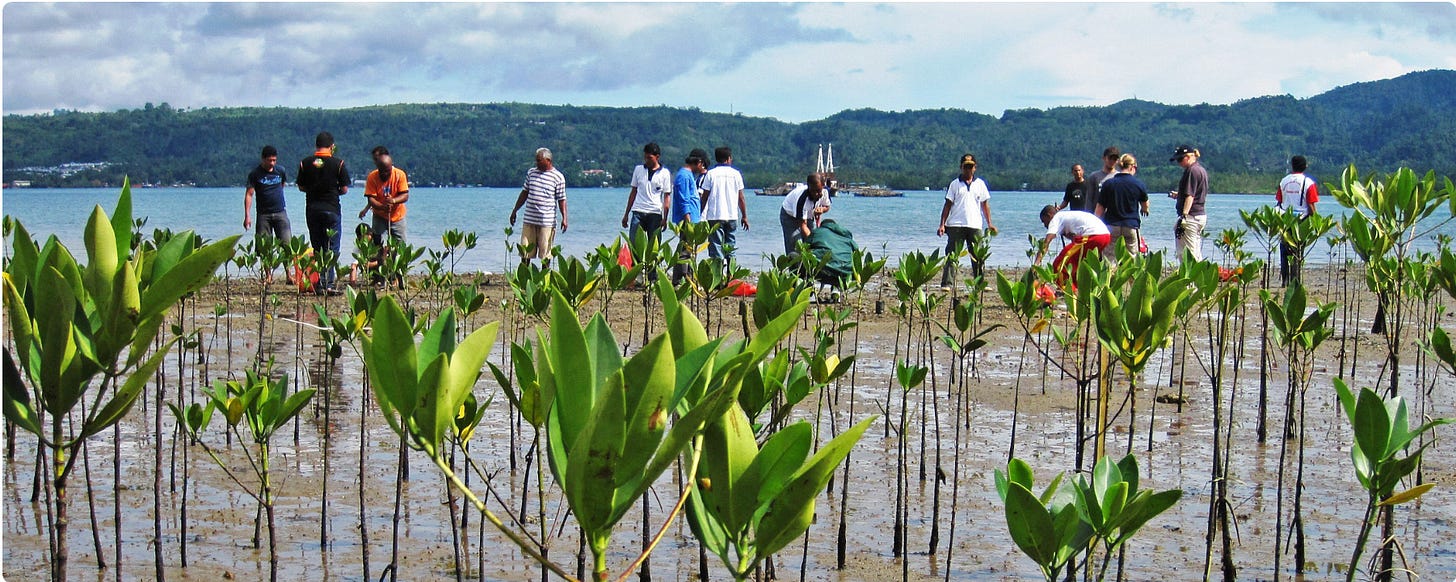
These efforts face significant challenges from continued coastal development and pollution in Jakarta Bay. Industrial runoff and untreated sewage create water quality conditions that make mangrove survival difficult, highlighting the interconnectedness of Jakarta's environmental challenges.
Despite these limitations, successful restoration sites demonstrate mangroves' potential to provide low-cost coastal protection while supporting local livelihoods through sustainable fisheries and ecotourism.
Governance and Climate Justice
Jakarta's adaptation efforts are hampered by the same governance challenges that created its climate vulnerabilities in the first place. Complex bureaucratic structures, corruption, and weak enforcement continue to undermine even well-designed climate interventions.
Fragmented Authority, Fragmented Response
Responsibility for flood management in Jakarta is distributed across multiple governmental bodies—including provincial agencies, municipal administrations, national ministries, and specialised authorities—creating a fragmented institutional landscape. Research identifies a lack of coordination and overlapping mandates between key actors such as the Balai Besar Wilayah Sungai Ciliwung-Cisadane (BBWSCC), the Directorate General of Human Settlements (DGCK), and Jakarta’s Department of Public Works, which result in project delays and inefficient implementation of flood mitigation strategies like river normalisation and drainage upgrades.
A 2019 audit, highlighted by the Coalition of Jakarta Residents Opposing Water Privatization (KMMSAJ), reported state losses of approximately $141m (Rp 2 trillion) due to mismanaged water privatisation deals, underscoring how corruption diverts critical resources from climate adaptation. As a result, delays in piped water expansion perpetuate reliance on groundwater extraction, further accelerating land subsidence—a major contributor to Jakarta’s sinking.
The Equity Gap
Climate adaptation investments in Jakarta exhibit pronounced inequality, with wealthier neighbourhoods receiving the bulk of protection through infrastructure upgrades, flood barriers, and early warning systems, while poor communities—primarily those in informal settlements—depend on community-led responses with minimal state support. Although informal settlements house a substantial proportion of Jakarta’s population (some estimates put this at more than 60%), adaptation funding disproportionately benefits more affluent districts. Recent flood events have shown that affluent areas often receive faster and more comprehensive emergency assistance compared to delayed responses in poorer communities. This deepens existing urban inequalities and reflects a broader pattern wherein adaptation efforts tend to reinforce rather than reduce social divides.
Continued Environmental Degradation
Despite significant investments in adaptation infrastructure, the root causes of Jakarta’s vulnerability persist largely unabated. There are over 10,000 illegal wells in operation across the city—often linked to industrial and commercial water users—exacerbating groundwater extraction and accelerating subsidence rates, which in some areas exceed 15–25 cm per year. Furthermore, industrial development continues in flood-prone zones, and wetland conversion proceeds, despite official commitments to expand green space and restore natural buffers. This ongoing environmental degradation highlights how short-term economic interests frequently prevail over long-term climate resilience, undermining the effectiveness of even well-resourced adaptation projects.
A City on the Edge of Tomorrow
Jakarta's climate response represents one of the most ambitious urban adaptation efforts ever attempted. From the audacious Garuda Sea Wall to the unprecedented capital relocation, from pioneering Islamic finance to community-led resilience, the city is deploying every tool available to survive its climate crisis.
Yet Jakarta's experience also reveals the sobering limitations of adaptation when underlying vulnerabilities remain unaddressed.
Jakarta's future hinges on three critical questions that remain unanswered:
Can technology outpace subsidence? Even if the Garuda Sea Wall succeeds in protecting Jakarta from rising seas, the city's land may sink faster than any wall can rise. Without addressing groundwater extraction, Jakarta's most expensive adaptation efforts may prove futile.
Who gets left behind? As government relocates to Nusantara and wealthy residents migrate to higher ground, Jakarta risks becoming a city of the climate-vulnerable poor. This spatial segregation of climate risk could undermine the political constituency needed for continued adaptation investment.
Is Jakarta a blueprint or a warning? The city's crisis mirrors vulnerabilities in Miami, Lagos, Manila, and dozens of other coastal megacities where climate threats collide with governance gaps. Jakarta's pioneering responses offer valuable lessons, but its ongoing struggles suggest that technological solutions alone cannot overcome systemic challenges.
Jakarta’s story ultimately reflects a broader truth about climate adaptation: the technical challenges, while immense, are often less daunting than the political, social, and economic transformations required for genuine resilience.
As Jakarta continues its race against time, it offers both inspiration and caution for cities worldwide. Its innovations demonstrate human ingenuity at its most creative, while its ongoing vulnerabilities highlight the limits of technological solutions to systemic problems. In this sense, Jakarta remains a city on the edge—not just of environmental catastrophe, but of breakthrough solutions that could redefine urban resilience for the climate era.



